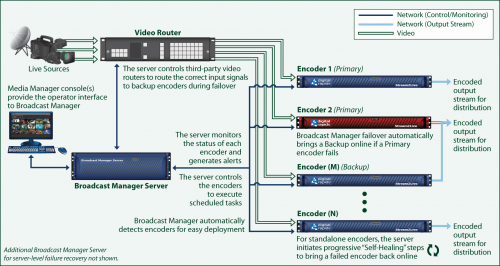If you would like to see more information on this case study, click here!
You can request this case study and a WCDE staff member will get back to you.
Digital Rapids delivers software and hardware solutions in response to the problem of effective multimedia utilization. They provide content transformation in order to reach wider audiences by way of encoding and transcoding video formats, broadcasting live streams, and allowing consumers to create dynamic workflow graphs using products such as the Kayak Workflow Platform, as illustrated in Figure 1. The Kayak Workflow Platform enables systems integrators and software developers to design, deploy, and manage customized workflows in a multi-screen media environment. The company consists of a number of departments, including the Kayak component team, the focus of which is implementation, maintenance, and modification of modules for the Kayak Workflow Designer.
The programming language underlying the implementation of any software expresses itself in terms of overall software operation where performance, flexibility and functionality are concerned. The Kayak component team develops their software with the C++ and Java languages and this commitment warrants the consideration of leveraging the full potential of available tools if the option has not yet been exhausted.
The programming language underlying the implementation of any software expresses itself in terms of overall software operation where performance, flexibility and functionality are concerned. The Kayak component team develops their software with the C++ and Java languages and this commitment warrants the consideration of leveraging the full potential of available tools if the option has not yet been exhausted.
Duncan Cheuk Kan Ma, a co-op student from the University of Waterloo, investigated what properties of a programming language are a consideration for its use in a software environment dealing primarily with video and audio processing.

Figure 1 – Example Broadcast Manager Live Streaming Failover Workflow
The teaching objectives for this case study are to develop an understanding of basic audio/video processing, to discover the tools necessary for said processing and to perform the analysis to determine the optimality of available tools for the development.
If you would like to see more information on this case study, click here!
You can request this case study and a WCDE staff member will get back to you.
Contact Waterloo Cases in Design Engineering
Steve Lambert
Tel: (519) 888-4728
Email: steve@uwaterloo.ca
The University of Waterloo acknowledges that much of our work takes place on the traditional territory of the Neutral, Anishinaabeg, and Haudenosaunee peoples. Our main campus is situated on the Haldimand Tract, the land granted to the Six Nations that includes six miles on each side of the Grand River. Our active work toward reconciliation takes place across our campuses through research, learning, teaching, and community building, and is co-ordinated within the Office of Indigenous Relations.